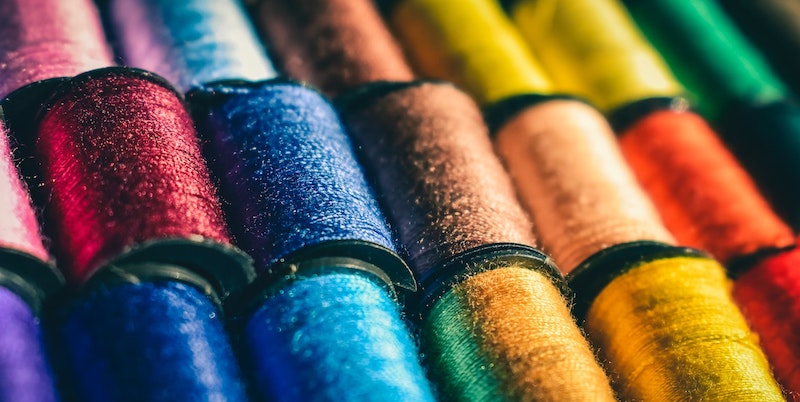The World’s Best Carpet Brands
 |
 |
 |
 |
 |
| Country: USA Products: Tufting, Flooring web: www.shawfloors.com Tel: 1-800-441-7429 |
Country: Turkey Products: Machine Made Web: www.royalhali.com Tel: +90 (850) 259 70 70 |
Country: Egypt Products: Machine Made, Tufting Web: orientalweavers.com Tel: +2055-4411137 |
Country: USA Products: Tufting, Flooring Web: mohawkflooring.com Tel: +1-800-266-4295 |
Country: Iran Products: Machine Made Web: www.solomon-carpet.com Tel: +98 21-434340000 |
 |
 |
 |
 |
 |
| Country: USA Products: All Flooring Web: www.milliken.com Tel: +1 864.503.2020 |
Country: TURKEY Products: Machine Made Web: melikhancarpets.com Tel: +90 342 323 12 11 | Country: Turkey Products: Machine Made Web: www.bahariyehali.com Tel: +90 282 674 52 40 |
Country: Turkey Products: Machine Made Web: www.dinarsu.com.tr Tel: +90 212 654 69 50 |
Country: Turkey Products: Machine Made wool carpet Wbe: zenovacarpet.com.tr Tel: +90 (246) 224 12 76 |
 |
||||
| Country: Belgium Products: Machine Made Web: www.baltagroup.com Tel: +32 (0)56 62 22 11 |
||||
Top Countries for Carpet Manufacture and Export
Machine-Made Carpet
|
With around 8.5 billion dollars in global trade, machine-made carpet leads the textile flooring industry, as shown in the table below. Turkey, China, Belgium, India, the Netherlands, and Iran are the top six producers of best machine made carpet in the world. With various good products for the market, Turkey, which produces 30% of the world’s machine-made carpets, has boosted exports to 2.7 billion dollars. With more than 400 equipped production units, the Turkish city of Gaziantep is the world’s largest production hub for carpets created by machines. The corona pandemic was a blessing for Turkish carpet exporters because Turkey was introduced as a great and capable alternative when the US market, the largest carpet importer in the world, was closed to China. As a result, Turkey now holds a significant portion of the carpet market. |
Turkey has recently expanded its market reach by hiring talented designers and enhancing its manufacturing capabilities. Turkey is the best machine made carpet exporter.
Numerous facilities in this country produce different types of carpet yarns, as well as multiple component factories, finishing sectors, and significant carpet production holdings. Turkey excels at modifying its products to meet market demands. The most crucial of these techniques are making carpets with recycled threads, producing carpets with particular applications, producing light, inexpensive carpets, and achieving essential European and American requirements. Two European countries that are well-known for their best machine made carpet brands are Belgium and the Netherlands. A sharp rise in production costs has led many European nations to import machine-made carpets from Turkey. |
But because of their long tradition in carpet manufacturing, Belgium and the Netherlands remain among the world’s leading sources of inspiration and creativity for machine-made carpets. The crucial distinction and superiority when it comes to the production of these two countries is the high priority given to: ● Environmentally friendly and carbon-free production These problems have allowed these two countries to hold onto their market share in this cutthroat industry. |
World Machine-Made Carpets Imports (1.000 $)
What Are the Key Success Factors in the Market for Textile Flooring?
Which Country Produces Machine-Made Carpet of the Finest Quality?
| As the name implies, machine-made carpet is woven by machines; very few people are involved in determining their quality.
There is modern, high-tech machinery in most countries that generate machine-made carpets that can create carpets of various weights and grades to suit the demands of the market and the producer. The cost of the carpet produced by machines rises or falls by two points. One is the type and kind of material applied in carpet weft yarn and pile yarn, and the other is how many knots are present on each square meter of the carpet surface. A carpet with a higher pile density per square meter will be heavier, use more carpet yarn to create its texture, and cost more money. For instance, a wool carpet will cost more than a polypropylene carpet. Or a wool carpet with one million knots costs less than one with three million. Modern weaving techniques produce delicate carpets similar to handmade ones in terms of elegance, beauty, and luxury. The number of knots per square meter has risen. These types of machine-made carpets are likewise expensively priced due to the usage of very delicate yarns and the expensive machines used to weave them. According to the kind of carpet yarn, the quality, and the texture, the carpet cost in world markets often ranges from $10 to $50 per square meter. |
 |
What Equipment Are Needed to Make Carpet?
Tufting Carpet Sector
The international trade volume for tufted carpets exceeds $7 billion annually, making it a significant market. America, England, Germany, Canada, and France are the top five countries in the world for importing and purchasing tufted carpets.
The countries of China, Holland, Belgium, India, America, and Turkey make the most tufted carpets worldwide, in that order. The major importers and exporters of tufted carpets are detailed in the table below.
There are numerous uses for tufted carpets, particularly in business settings, public places, workplaces, hotels, etc.
Because of its enormous consumption and widespread demand for its manufacture, America can be said to be the heaven of tufted carpets, as shown by the facts and numbers. Due to the high demand for this carpet in America, major domestic manufacturers like Shaw Carpet, Mohawk, etc. cannot satisfy the entire domestic market. As a result, tufted carpet imports continue to grow significantly in America.
The Netherlands and Belgium are the two major players in this sector in Europe.

Handmade Carpet Sector
| The global handmade carpet market was worth about 1.2 billion dollars in 2021, less than the markets for machine-made and tufted carpets.
India, with 336 million dollars, Egypt, with 174 million dollars, and Iran, with 80 million dollars, are the three major competitors in this sector. The low manufacturing rate and costly price are the two most significant factors that should be emphasized when discussing the modest size of the handmade carpet market. A handmade carpet may take weeks or months to complete, as opposed to a carpet manufactured by a machine, which may be produced in a few hours. A handmade carpet is a lovely and precious item that, if you purchase a decent, authentic carpet, will not only retain its value over time but also |
increase in value and eventually turn into an antique.
The best handmade carpet is the Iranian carpet, which is produced entirely of natural and organic materials and, in some circumstances, is even more exquisite and delicate than a painting. Due to their access to cheap labor and ability to capitalize on Iran’s exclusion from the handmade carpet market due to US sanctions, countries like India, Pakistan, and Nepal have been able to fulfill the void left by the absence of Iranian carpets on the market. Before the embargo, Iran exported 600 million dollars worth of handmade carpets. Without exaggeration, it can be argued that handmade carpets from Iran are of the most outstanding calibre available. |

Which Country Produces the Most Expensive Carpets in the World?
Perhaps it is best to visit countries that manufacture handmade carpets if you want to pick the country that manufactures the most expensive carpets in the world. Due to industrialized production, numerous uses, a competitive market, and the type of strands, primarily synthetic, tufted, and machine-made carpets, are less expensive.
As was already mentioned, handmade carpets are generally more costly because they are weaved by an artist and a carpet weaver and also employ natural materials. However, among handmade carpets, those that incorporate raw silk into their texture are more precious than others, and their cost rises in proportion to the amount of silk utilized.
Some carpets only use natural silk in specific areas of the design, such as the carpet’s flowers, while the most carpet is made of wool. The most Expensive carpets in the world can be found in some Iranian carpets, such as those from Qom and Tabriz, which are woven entirely of natural silk.
However, in recent years, several Chinese enterprises have significantly benefited from the stagnation of handmade carpets in Iran to engage skilled artisans and spinners of Iranian silk carpets. Silk carpets with Iranian motifs are woven in China, the origin of the world’s silk, and are marketed as Iranian carpets on international markets
Iran : A Country with High Potencial But Little Market Share
In respect of the infrastructure for manufacturing machine-made carpets, Iran, which is a neighbor of Turkey, resembles Turkey practically a great deal, but its position in the export markets is quite different because of political problems and economic sanctions. Iran is home to over 700 plants that manufacture machine-made carpets, which generate about 80 million square meters of carpet annually. Iran has a booming market for machine-made carpets.
Because of the culture of the people there, carpets play a significant role in homes, and almost every home has several machine-made carpeting pieces. Compared to other types of flooring like handmade carpet, wooden flooring, laminate parquet, etc., machine-made carpet has a lot of supporters because of Iran’s high production levels.
Due to Iran’s longstanding involvement with carpets, the machine-made carpet industry is thriving and influential. However, why does Iran not appear on the list of countries exporting carpets made by machines or even on the global market? According to Iranian customs’ official statistics, about 300 million meters of machine-made carpets are shipped outside of Iran each year.
Iranian carpets are also on the US sanctions list, so it is impossible to transfer money through the banking system, and most of Iran’s exports are to foreign countries. Iran’s two western and eastern neighbours, Iraq and Afghanistan, are the country’s two biggest customers for machine-made carpets. Additionally, many businesses that export carpets to Europe and other regions of the world do so via their registered entities in other countries, local retailers in the place of origin, or intermediaries in Turkey, Dubai, Germany, etc.
Iran can be listed among the top six countries that export machine-made carpets worldwide if we consider that its export figures are equivalent to $300 million per month. According to experts, Iran can quickly grow its exports of carpets created by machines to reach over 1 billion dollars if the economic sanctions are reversed.
Some charts and data sources from: trademap.org






